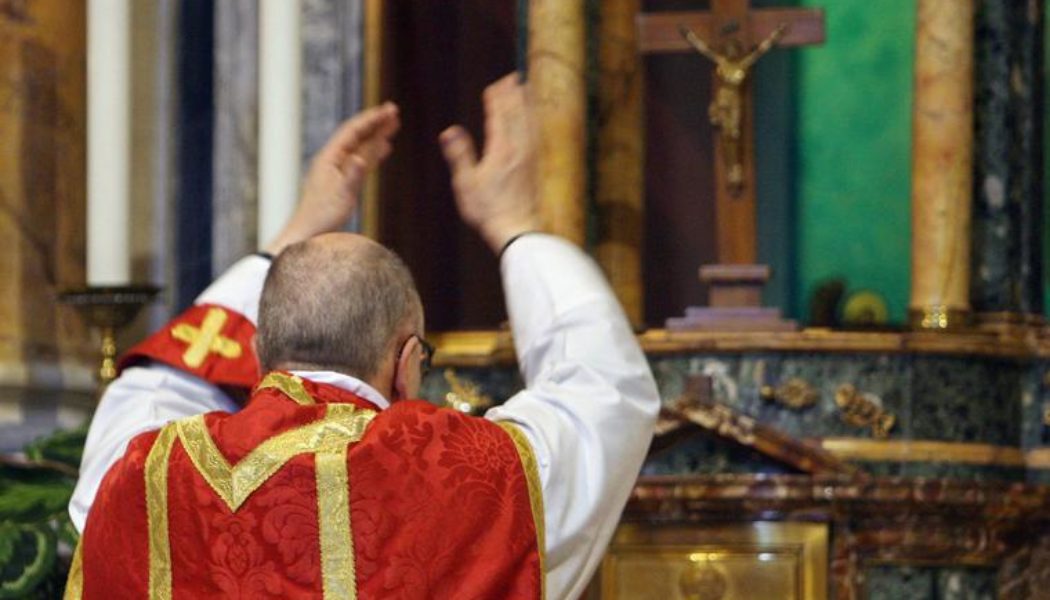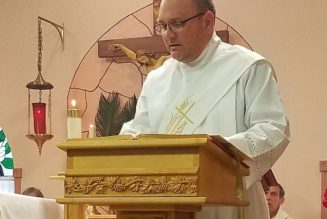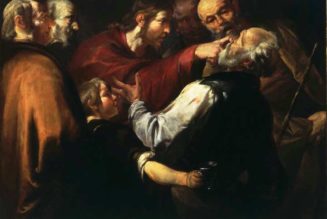
We must pray that bishops make careful, courageous and pastoral decisions on the implementation of the motu proprio
As most of you know, just before Christmas, an explanatory document (“responsa ad dubia”) was issued seeking to answer some of the many questions arising from Traditiones Custos, a motu proprio of Pope Francis on the Traditional Latin Mass.
Many good authors have already commented on it, raising both canonical and liturgical concerns and questions. My own thoughts on this are from the perspective of a diocesan pastor who has served those who love the Traditional Latin Mass (TLM), and who has also served those who appreciate the current order of Mass. I like both forms for different reasons.
The Harsh Tone of the Responsa ad Dubia
As a pastor of souls, I cannot find words to express the hurt and anger (righteous, I pray) I experience over the treatment of Catholics who are attached to the older forms of the liturgy and the sacraments. I have not seen such language or harshness directed against any other group, in or out of the Church. The tone is singular and shocking. Those who love the Traditional Latin Mass are my brothers and sisters in the Lord and I have long admired their tenacity and orthodoxy. Many of them have large families and take the faith very seriously. For them, Catholicism is not only a faith, but also a culture both ancient and new. They are up for the battle of living the faith in an increasingly secular world. They are not a particularly large segment of the Church in the United States, but they are one of the few segments of the Church that is growing and flourishing. They love the faith and the Mass, and I grieve that they are being treated so brusquely and harshly.
As an illustration of this harshness, consider how Archbishop Arthur Roche, prefect of the Congregation for Divine Worship and author of the responsa, explained the rules for the celebration of the TLM in a parish church:
Moreover, such a celebration [of the TLM] should not be included in the parish Mass schedule, since it is attended only by the faithful who are members of the said group. Finally, it should not be held at the same time as the pastoral activities of the parish community. It is to be understood that when another venue becomes available, this permission will be withdrawn. There is no intention in these provisions to marginalize the faithful who are rooted in the previous form of celebration: they are only meant to remind them that this is a concession to provide for their good (in view of the common use of the one lex orandi of the Roman Rite) and not an opportunity to promote the previous rite.
While the good archbishop says there is no intent to marginalize Catholics devoted to the TLM, marginalization is the actual effect of such an edict. How is it possible to read the previous quote as anything but as an annoyed tolerance at best, or an outright rejection at worst?
In effect it says, “We really prefer you to be in isolated places, but if you must use one of our parish churches, it must be made clear: you are not really ‘us.’ You cannot appear on our schedule, you cannot celebrate your TLM at a time when any of us might be around, and, while we consent to have you here now, as soon as ‘another venue’ is found you will be asked to leave forthwith.”
In other words: “Off to the margins with you.” And all this in a time of Francis, who speaks often of going to the margins and peripheries with a message of love.
As a pastor of souls, I wince at this sort of language directed at good Catholics who love the ancient liturgy of the Church that nourished most of our saints and forebears. Dissenters and even abortion activists are treated better than this. Frankly, I am overwhelmed with sorrow and don’t know what to say to Catholics who read things like the quote above. It is shocking, saddening, marginalizing and even dehumanizing. St. Paul said, “Make room in your hearts for us … we live and die together with you!” (2 Corinthians 7:2-3)
It’s Not About Vatican II
There have been recent debates online about the Second Vatican Council and its authoritative stance in the Church today. I am aware that this has rightly concerned some in the hierarchy. And, among older Catholics, there can sometimes be a tendency to bundle the Latin Mass with concerns about “the Council” — but most of the Catholics I know who like the TLM are young adults who were born long after the Second Vatican Council. When I ask them why they like the TLM, most of them speak of its quietness and reverence. They say it gives them time to pray and encounter the Lord. We do well to listen to them and not simply dismiss their perceptions.
There are some who decry aspects of the Council and the liturgical changes that came after. But frankly, the Mass that came forth in 1970 went well beyond what the Council Fathers envisioned — in fact, the TLM looks a lot more like what the Council spoke of than the ordinary form we have today. The Council Fathers, while permitting more of the vernacular, still esteemed and gave pride of place to Latin, Gregorian chant, sacred polyphony and the organ. It never spoke of things like Mass facing the people or Communion in the hand. Hence it is simplistic and wrong to identify the current form of the Mass with Vatican II or to claim that those who love the TLM thereby reject the Council.
Catholics who are traditional also do well to avoid overly linking the current Mass with the council. A lot happened in the five years between the end of the council and the promulgation of the new Missal in 1970. Both sides would do well to study that period and ponder what was authentic and what may have strayed from what the Council Fathers set forth. Vatican II, while not a council of decrees and anathemas, deserves our respect and study. To be sure, it took place in a tumultuous time, but its overall reflections deserve careful consideration of all the faithful.
Bishops Are Placed in a Difficult Position
This Roman focus on the TLM also puts our bishops in a very difficult position by insisting that they deal heavy-handedly with a problem that may not even exist in their diocese. Thus far, many bishops have dealt graciously with traditional Catholics and exercised reserve. But these latest guidelines turn up the heat on them and they are sure to experience increasing pressure from Rome to act forcefully. And though Traditiones Custos indicated that the local bishop is chief liturgist and moderator of the liturgy, the Roman responsa seem to require that bishops ask permission from Rome to appoint priests who are “permitted” to say the TLM.
Further, regarding the location of the celebration of the TLM, can a Roman prefect deny the canonical right of a bishop to dispense with disciplinary norms for the good of the faithful? Should a bishop really have to ask permission of Rome to exercise a right he already has? (See Canon 87.)
We can only pray for bishops to make careful, courageous and pastoral decisions that may place them in tension with the Congregation for Divine Worship.
Pastoral Flexibility vs. “One-Size-Fits-All”
Who is to say that non-parochial settings such as personal parishes is the best location for the Traditional Latin Mass and for the other sacraments? In my own archdiocese we decided decades ago that the best policy was to incorporate the TLM into certain approved parish settings. We did not think it was healthy or wise to seclude traditional Catholics in specialized churches. It was our instinct to keep them close to the heart of the Church and under the care of a pastor who said both forms of the Mass. We do not have personal parishes run by the Priestly Fraternity of St. Peter or other groups.
This is also the case in many other dioceses. And, given their size, a non-parochial setting may not be feasible to adequately supply the needed sites to assist the faithful. Hence, in dioceses such as mine, we consider it wise and practical to use the parish setting for the celebration of the TLM.
Archbishop Roche has a very different point of view. But isn’t the local bishop better equipped to know what is best in his diocese and situation? Why must there be a one-size-fits-all solution?
We can only pray that our bishops will steer a pastoral course. We have lived peaceably with the Traditional Latin Mass for decades now here in the United States. There is no need for such harsh measures. These are primarily younger people who are good and devout Catholics. For the love of God and the care of souls, be generous good shepherds and bishops of us all.
Join Our Telegram Group : Salvation & Prosperity









